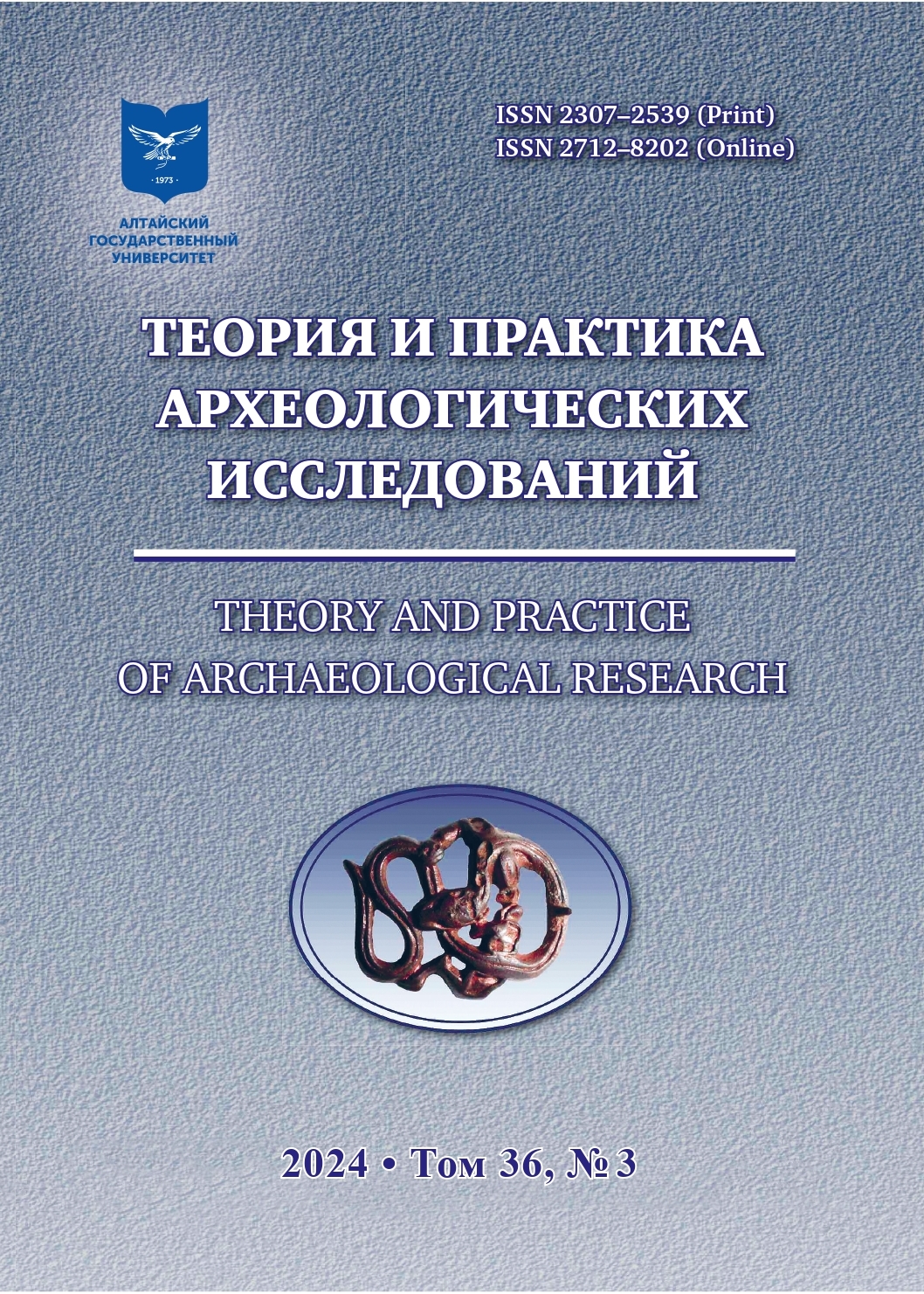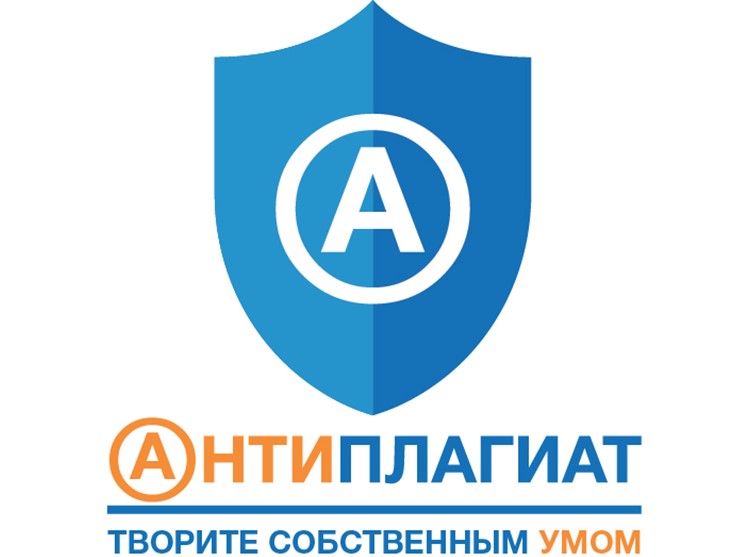CERAMICS AND STONE ARTIFACTS OF THE KIPRINO ARCHAEOLOGICAL MICRODISTRICT FROM THE COLLECTIONS OF THE SHELABOLIKHA DISTRICT MUSEUM
Abstract
The article presents collections of ceramics and stone artifacts from the exhibition and auxiliary funds of the Shelabolikha Regional Museum, studied in 2001 and 2017. Currently, part of the collection is lost. Drawings and photographs from 2001 and 2017 are the only source of information about missing ceramics and stone artifacts transferred to the Shelabolikha District Museum by residents of the Shelabolikha District in the period from 1994 to 2002.
It is impossible to establish an exact connection between the studied artifacts and the museum receipt book. We can only state that they all come from destroyed Neolithic-Early Bronze Age sites in the Kiprinsky archaeological microdistrict. An analysis of the museum’s collection book allows us to conclude that most of the exhibits come from the territory of the Kiprinsky Borok, and a small part of the collection comes from the Seleznevsky Borok.
The studied collections significantly expand the understanding of the technique of primary cleavage,the tool set and the typology of stone artifacts of the Kiprino archaeological microdistrict, which has developed in the scientific literature based on the publication of materials from the Kiprino settlement (Komarova, 1956).
The ceramics collections contain various groups that differ in shape, ornamentation technique and composition of molding masses. The presented ceramic groups find a wide range of analogues in the circle of archaeological sites of the Neolithic — Early Bronze Age of the south of Western Siberia.
Downloads
Metrics
References
Bobrov V.V., Marochkin A.G. Artyn Culture. In: Proceedings of the III (XIX) All-Russian Archaeological Congress. St. Petersburg ; Veliky Novgorod : IIMK RAN, 2011. Vol. I. Pp. 106–108 (In Russ.)
Vinogradov A.V. Neolithic and Early Bronze Age of the Minusinsk Region (on the materials of ceramic complexes of ancient settlements). St. Petersburg : IIMK RAN, 2022. 272 p. (In Russ.)
Zakh V.A. Neolithic and Early Metal Age of the Forest-Steppe Prisalairie and Priobie. Tyumen: Izd-vo In-ta problem osvoeniya Severa, 2003. 168 p. (In Russ.)
History of Altai: in 3 vol. Vol. 1: The Most Ancient Epoch, Antiquity and Middle Ages. Barnaul: Izd-vo Alt. un-ta ; Belgorod : Constanta, 2019. 392 p. (In Russ.)
History of Siberia: in 4 vol. Vol. 1: Stone and Bronze Age. Novosibirsk : Izd-vo In-ta arheologii i etnografii SO RAN, 2022. 660 p. (In Russ.)
Kiryushin K.Yu., Semibratov V.P. Settlement Seleznevo-I — a New Object of Archaeological Heritage of Shelabolikha District. In: Field Studies in the Upper Priobie and Altai. 2010: Archaeology, Ethnography, Oral History. Issue 7. Barnaul : AltGPA, 2011. Pp. 82–86 (In Russ.)
Kiryushin K.Yu., Gorbunov V.V., Semibratov V.P. Complex of Odintsovo Culture at the Settlement Kiprino-I. In: Preservation and Study of the Cultural Heritage of the Altai Krai. Issue XVIII–XIX. Barnaul : AZBUKA, 2013. Pp. 142–146 (In Russ.).
Kiryushin K.Yu., Kiryushin Yu.F. Collection of Ceramics and Stone Artifacts of the Kostrakovo Lake Settlement from the Collections of the Altai State Museum of Local Lore. In: Archaeology of Siberia: Touching the Ancient History. Kemerovo : Izd-vo KRIPKiPRO, 2023. Pp. 121–133 (In Russ.).
Kiryushin Yu.F. Eneolithic and Early Bronze Age of the South of Western Siberia. Barnaul : Izd-vo Alt. un-ta, 2002. 294 p. (In Russ.)
Komarova M.N. Neolithic of the Upper Priobie. Kratkie soobshcheniya Instituta istorii material’noj kul’tury = Short Communications of the Institute of History of Material Culture. 1956;64:93–103 (In Russ.).
Matyushchenko V.I. Ancient History of the Population of the Forest and Forest-Steppe Priobie (Neolithic and Bronze Age). Neolithic Time in the Forest and Forest-Steppe Priobye (Upper Ob Neolithic Culture). In: From the History of Siberia. Issue 9. Tomsk : Izd-vo Tom. un-ta, 1973. 147 p. (In Russ.).
Molodin V.I. Neolithic and Bronze Age of the Ob-Irtysh Forest-Steppe. Novosibirsk : Nauka, 1977. 176 p. (In Russ.)
Rudometov P.L. Random Finds from Kiprinsky Borok. In: Protection and Research into Altai Archeological Sites. Barnaul : Izd-vo BGPU, 1991. Pp. 44–47 (In Russ.).
Rudometov P.L., Kiryushin K.Yu., Tishkin A.A. Settlement of the Yelunino Archeological Culture in the Ob Floodplain near Kiprino Village (Altai Territory). In: Preservation and Study of the Cultural Heritage of the Altai Territory. Issue XXIX. Barnaul : Izd-vo Alt. un-ta, 2023. Pp. 205–211 (In Russ.).
Tishkin A.A., Kiryushin K.Yu., Schmidt A.V. Ceramics of the Rubtsovskoye Settlement (the Alei River valley, south of Western Siberia). Teorija i praktika arheologicheskih issledovanij = Theory and Practice of Archaeological Research. 2016;4:55–69 (In Russ.).
Copyright (c) 2024 К.Ю. Кирюшин

This work is licensed under a Creative Commons Attribution 4.0 International License.
Theory and Practice of Archaeological Research is a golden publisher, as we allow self-archiving, but most importantly we are fully transparent about your rights.
Authors may present and discuss their findings ahead of publication: at biological or scientific conferences, on preprint servers, in public databases, and in blogs, wikis, tweets, and other informal communication channels.
Theory and Practice of Archaeological Research allows authors to deposit manuscripts (currently under review or those for intended submission to ABS) in non-commercial, pre-print servers such as ArXiv.
Authors who publish with this journal agree to the following terms:
- Authors retain copyright and grant the journal right of first publication with the work simultaneously licensed under a Creative Commons Attribution License (CC BY 4.0) that allows others to share the work with an acknowledgement of the work's authorship and initial publication in this journal.
- Authors are able to enter into separate, additional contractual arrangements for the non-exclusive distribution of the journal's published version of the work (e.g., post it to an institutional repository or publish it in a book), with an acknowledgement of its initial publication in this journal.
- Authors are permitted and encouraged to post their work online (e.g., in institutional repositories or on their website) prior to and during the submission process, as it can lead to productive exchanges, as well as earlier and greater citation of published work (See The Effect of Open Access).








2.jpg)




